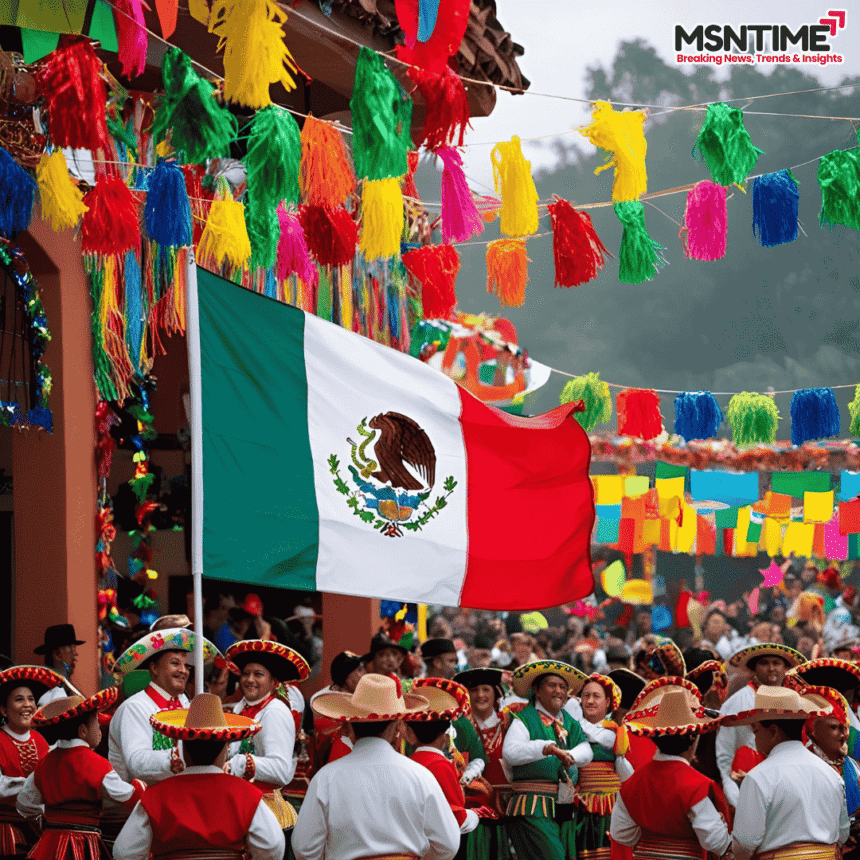Introduction to the Mexico Flag
The Mexico flag is a powerful symbol of the country’s history, culture, and independence. With its bold colors and unique emblem, it stands out among the flags of the world. The Mexico flag meaning goes beyond just a piece of cloth—it tells the story of a nation’s struggle and pride.
In this article, we will explore:
- The Mexico flag colors and what they represent
- The history and evolution of the Mexico flag
- The significance of the emblem in the center
- Fun facts and traditions related to the flag
Let’s take a closer look!
The Design and Colors of the Mexico Flag
The Mexico flag has three vertical stripes: green, white, and red. In the middle of the white stripe is Mexico’s national emblem—an eagle perched on a cactus, eating a snake.

What Do the Mexico Flag Colors Mean?
Each color on the Mexico flag has a special meaning:
- Green – Represents hope and the independence movement.
- White – Stands for purity, unity, and the Catholic faith (historically).
- Red – Symbolizes the blood of the heroes who fought for Mexico’s freedom.
Originally, the Mexico flag colors had slightly different meanings. The green stood for independence from Spain, the white for religion, and the red for unity between Europeans and Mexicans. Over time, the meanings shifted to reflect modern values.
The Emblem: Eagle, Cactus, and Snake
The emblem in the center of the Mexico flag comes from an ancient Aztec legend.
The Legend of Tenochtitlán
According to Aztec mythology, their gods told them to build their capital city where they saw an eagle sitting on a cactus, eating a snake. After years of searching, they found this sign in what is now Mexico City. This is why the emblem is so important to the Mexico flag meaning.
History of the Mexico Flag
The Mexico flag has gone through several changes since Mexico gained independence.
First Version (1821)
The first Mexico flag was created after Mexico won independence from Spain in 1821. It had the same three colors but with a different emblem—a crown representing the short-lived Mexican Empire.
Modern Flag (1968)
The current Mexico flag was officially adopted on September 16, 1968. This date is also Mexico’s Independence Day, making the flag even more meaningful.
How Mexicans Honor Their Flag
The Mexico flag is treated with great respect. Here are some important rules:
- It must never touch the ground.
- It should always be in perfect condition—no tears or faded colors.
- During the national anthem, people must stand straight and face the flag.
Fun Facts About the Mexico Flag
- Giant Flags – Some of the largest Mexico flags in the world can be seen in Mexican cities like Monterrey.
- Flag Day – February 24 is dedicated to celebrating the Mexico flag.
- Similar to Italy’s Flag – The Mexico flag colors are the same as Italy’s, but the emblem makes it unique.
- Only One Like It – No other country’s flag has an eagle eating a snake on a cactus.
Mexico Flag vs. Italy’s Flag
Many people confuse the Mexico flag with Italy’s flag because both have green, white, and red stripes. The key difference is the emblem—Mexico’s flag has it, while Italy’s does not.

FAQs About the Mexico Flag
1. What do the three colors on the Mexico flag stand for?
Green = hope, white = unity, red = blood of national heroes.
2. Why is there an eagle on the Mexico flag?
It comes from an Aztec legend about the founding of Mexico City.
3. When did Mexico adopt its current flag?
The design was officially chosen on September 16, 1968.
4. How can you tell the Mexico flag apart from Italy’s?
The Mexico flag has an emblem in the center; Italy’s does not.
5. Where is the world’s largest Mexico flag?
One of the biggest is in Monterrey, measuring 50 by 28 meters.
Conclusion
The Mexico flag is a proud symbol of the nation’s history and identity. Its colors and emblem tell a story of struggle, unity, and freedom. Whether flying high on a pole or worn with pride, the Mexico flag is a powerful reminder of what it means to be Mexican.
Did you enjoy learning about the Mexico flag? Share this article with others who love history and culture!







